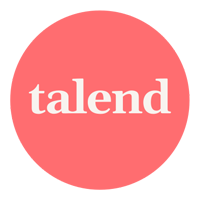Data falls into two categories: structured and unstructured. Structured data is a type of information that has been organized in a way that makes it easily searchable and readable by data analysis tools, while unstructured data includes content like videos, emails, and images—data with no internal identifier to help search functions recognize it. Your business likely deals with both types of data. This article looks closely at structured data, which is the backbone of data analysis.
Importance of Structured Data
Structured data, or quantitative data, is highly organized and readable by machine learning algorithms, making it easier to search, manipulate, and analyze. Structured data can include names, addresses, dates—fields that are recognizable and searchable by computers.
Compare this to unstructured data, which includes everything from social media posts to music files, emails, and images. It’s estimated that unstructured data makes up between 80 and 90 percent of all data generated globally.
Despite making up a much smaller percentage of existing data, structured data is considerably more valuable, as it’s much easier to handle and extract insights from.
The two types of data are not in opposition. In fact, structured data complements unstructured data and enables you to find insights in your unstructured datasets.
For example, structured data records can hold unstructured data within them. Consider a form that offers questions with a list of answers available in a dropdown menu but also allows users to add free-form comments. The answers generated from the pick list are structured data, but the comments field yields unstructured data.
To some degree, most data is a hybrid of unstructured and structured data. Semi-structured data is a loosely defined subset of structured data and includes the capability to add tags, keywords, and metadata to data types that were once considered unstructured data—for example, adding descriptive elements to images, emails, and word processing files. Markup languages such as XML are often used to manage semi-structured data.
Characteristics of Structured Data
It’s often a fine line between structured and unstructured data, depending on its source, organization method, and the software and expertise you have on hand to handle it. However, there are a number of characteristics that are unique to structured data, such as the following:
Organized and Categorized
Structured data is organized. It follows a specific format and structure, making it easy for machines to read and process the data.
Consistent
Structured data is consistent. It uses the same format across all instances of the data, ensuring data is consistently formatted and easily exchangeable.
Easily Searchable
Structured data is searchable. Its organized nature allows data analysis tools to quickly scan and interpret the data, thereby speeding up the data analysis process.
Structured Data vs. Semi-Structured vs. Unstructured Data
Structured data, semi-structured data, and unstructured data have significant differences in how they are organized and used.
- Structured Data: Well-organized and fits seamlessly into relational databases, making it simple to search, analyze, and change.
- Semi-Structured Data: Retains some organizational qualities while allowing greater flexibility and accommodation for complicated and hierarchical data relationships.
- Unstructured Data: Lacks a preset framework and is the most adaptable type and the most common in business intelligence and analytics applications.
Every organization gathers almost all of these types of data. It is a matter of how these data are being managed so they can be used effectively when it comes to making data-driven decisions.
Examples of Structured Data
Structured data is highly organized and easier to search, manipulate, and analyze. Structured data can include names, addresses, dates—fields that are recognizable and searchable by computers.
- Dates and Times: Dates and times follow a specific format, making it easy for machines to read and analyze them. For instance, a date can be structured as YYYY-MM-DD, while a time can be structured as HH:MM:SS. Both can be transformed into different iterations of the same format so they become accessible to data scientists from different cultural and linguistic backgrounds.
- Customer Names and Contact Information: When you sign up for a service or purchase a product online, your name, email address, phone number, and other contact information are collected and stored in a structured manner. This allows businesses to easily manage and analyze customer data.
- Financial Transactions: Financial transactions such as credit card transactions, bank deposits, and wire transfers are all examples of structured data. Each transaction comes with specific information in the form of a serial number, a transaction date, the amount, and the parties involved. This information is structured and stored in databases, enabling banks and financial institutions to track and analyze financial activities.
- Stock Information: Stock information such as share prices, trading volumes, and market capitalization is another example of structured data. This information is systematically organized and updated in real time. It enables investors and traders to make informed decisions based on the latest versions of data collected from the market.
- Geolocation: Geolocation data, including GPS coordinates and IP addresses, is often used in various applications, from navigation systems to location-based marketing campaigns. This data helps businesses understand where their customers are located, thereby helping them tailor their services or products to specific geographical areas.
3 Main Benefits of Structured Data
Despite making up a small percentage of all data generated globally, structured data is highly sought-after due to its value and importance for business decisions. Some of its advantages include:
Simplifies Search and Analysis
One of the main advantages of structured data is that it’s easy to search and analyze. Its organized nature allows data analysis tools to quickly scan and interpret the data, thereby speeding up the data analysis process.
Enhances SEO
Structured data can enhance SEO efforts and enable search engines to better understand the content of webpages, potentially leading to higher search rankings and improved visibility.
Facilitates Data Integration
Structured data facilitates data interoperability, ensuring information is consistently formatted and easily exchangeable between different systems or applications.
Disadvantages of Structured Data
It’s important to also be aware of the various disadvantages and limitations of structured data in order to work around them and prepare for any shortcomings you may encounter.
Limited Flexibility
One of the main disadvantages of structured data is its limited flexibility. Since it follows a specific format and structure, it can be challenging to accommodate data that doesn’t fit into these predefined categories, therefore limiting the data’s growth potential.
Time-Consuming to Set Up
Setting up a structured data system can be time-consuming and requires a significant amount of planning and coordination. You need to define the structure of the data beforehand, which can be a complex task, especially for large datasets.
Risk of Data Silos
There’s a risk of creating data silos with structured data, especially in large organizations where different departments may use different systems to store and manage data. This can make it difficult to share and integrate data across the organization.
5 Use Cases of Structured Data
Structured data plays an important role in different areas of business and analytics, as it fits neatly into databases, making it valuable for quantitative analysis. It plays a role across different industries, including web analytics, customer databases, health records, sales reports, and inventory management.
Web Analytics
Structured data helps web analytics since it tracks and analyzes website performances. It allows organizations to closely monitor how their customers are interacting with their web pages through user behavior, page views, click-through rates, and other relevant metrics. Organizations can optimize their online presence by structuring their data according to website visits as it will give them insights into user preferences, and identify popular content.
Customer Databases
Keeping a structured customer database is fundamental for businesses. It contains customer profiles, contact information, purchase history, and interactions. Structured customer data allows businesses to have targeted marketing campaigns, personalized communication, and better customer relationship management (CRM).
Health Records
In healthcare, structured data is utilized to efficiently handle patient information and medical history records. Electronic health records (EHRs) contain structured information about a patient’s medical history, diagnoses, treatments, and laboratory findings. Structured health records improve patient care, which makes it easier for healthcare providers to share data and help with clinical decisions.
Sales Reports
Structured data is important for measuring sales performance in any business. Organizations collect information about sales transactions, revenue, product categories, and customer demographics. These sales reports are based on structured data which assists businesses in identifying patterns, evaluating sales methods, and making informed decisions to optimize revenue.
Inventory Management
Structured data controls inventory levels, tracks stock movements, and monitors product availability. Organizations can avoid stockouts, improve supply chains, and maintain optimal inventory-related information. This way, they can provide for their customers and enhance their experience.
Structured data is greatly increasing by the day and managing it can be a challenge. Organizations must effectively handle large volumes of data and multiple data management tools are available to help with this process. These solutions improve the speed and efficiency of data processing and retrieval. As a result, it will guide organizations to have deeper insights and better strategic business decisions.

Talend
Talend’s data integration platform, Data Fabric, is known for its extensive data handling features. It allows big data processing, transformation, and mapping at the enterprise level, and its drag-and-drop interface makes it easier for users to design reusable data pipelines. In addition, it offers a diverse set of tools to collect data and ensure data integrity and quality.
Visit Talend

Informatica offers a variety of data management solutions, including Cloud Data Quality and Master Data Management (MDM). Both tools prioritize high data quality, making them excellent choices for enterprise-level data management. Informatica’s solutions are known for their dependability and comprehensive functionality, though they are at the higher end when it comes to pricing.
Visit Informatica

Microsoft Azure
Microsoft Azure Data Factory (ADF) is a cloud-based data integration solution that automates data migration and transformation across several cloud and on-premises sources. ADF has a visual interface for creating ETL/ELT pipelines and supports a variety of native data store interfaces. In addition, it provides serverless execution, scalable data processing, convenient scheduling, and robust data transformation tools.
Visit Microsoft Azure
Bottom Line: Structured Data is Invaluable to Any Organization
Structured data is a crucial component of any company’s big data landscape. It’s organized, searchable, and easy to analyze, making it an incredibly valuable asset for businesses, organizations, and individuals alike. Understanding structured data is just the first step toward being able to use it to the fullest. The real value lies in how you adopt this data to drive decision-making, optimize operations, and enhance customer and client experiences.
To learn more about different data types, read our guide to data structures and types.









